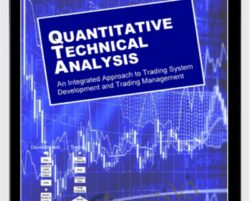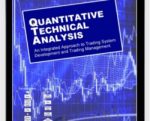The perspective of the book is that the goal of the developer of a trading system, and of the trader who uses it, is to have confidence that the signals issued by the system precede trades that provide rewards adequate to compensate for the risk.The key word is confidence.The primary limitation is risk.The focus of the book is risk.Assessing your personal risk tolerance.Estimating the risk in a trading system.Trade selection to minimize risk.Dynamically managing position size to maximize account growth, constrained to hold drawdown within your risk tolerance.The book is in two sections — one describing the development of trading systems, the other management of a system that is being traded.The trading system development portion discusses topics including measuring success, issue selection, the two components of a system (the model and the data), identification of patterns that precede profitable trades, in-sample data analysis, out-of-sample system testing, maintaining synchronization between the model and the data, and methods of validation.The trading management portion discusses a new and unique approach that continually monitors system performance, determines risk of drawdown, assesses the personal risk tolerance of the trader, computes the maximum safe position size, and estimates profit potential.It includes techniques for determining the health of the system being traded, readjusting the system as necessary, and deciding when to take it offline before serious loss of trading capital.Get Quantitative Technical Analysis – Howard Bandy, Only Price $32A technique that I have developed, which I call “dynamic position sizing,” uses an empirical Bayesian technique to determine the maximum safe position size, called “safe-f,” based on your personal risk tolerance in combination with recent trades. Position size is increased when the system is performing well.Position size is reduced when system performance deteriorates, eventually taking the system offline before an equity-destroying system failure.A metric, CAR25, which estimates profit potential is computed. CAR25 is a dominant metric. CAR25 can be computed for all alternative uses of funds. All available resources should be allocated to the one with the highest CAR25. Use of machine learning techniques, applied to trading systems, is introduced. Examples of classification and estimation are presented, using the Python language and associated application libraries.These links each open a pdf file related to the book.Table of ContentsIntroduction (Chapter 1)Summary (Chapter 10)Bibliography (Appendix 1)List of downloadable programs (Appendix 2)IndexErrataThe code shown in this book can be downloaded. Get Quantitative Technical Analysis – Howard Bandy, Only Price $32Tag: Quantitative Technical Analysis – Howard Bandy Review. Quantitative Technical Analysis – Howard Bandy download. Quantitative Technical Analysis – Howard Bandy discount.quantitative technical analysis bandy pdf download. quantitative technical analysis howard bandy pdf. quantitative technical analysis bandy. quantitative technical analysis an integrated approach pdf. quantitative and technical analysis. a quantitative approach to technical analysis. quantitative research technical definition. quantitative data technical definition
Quantitative Technical Analysis – Howard Bandy
₹4,648.00






